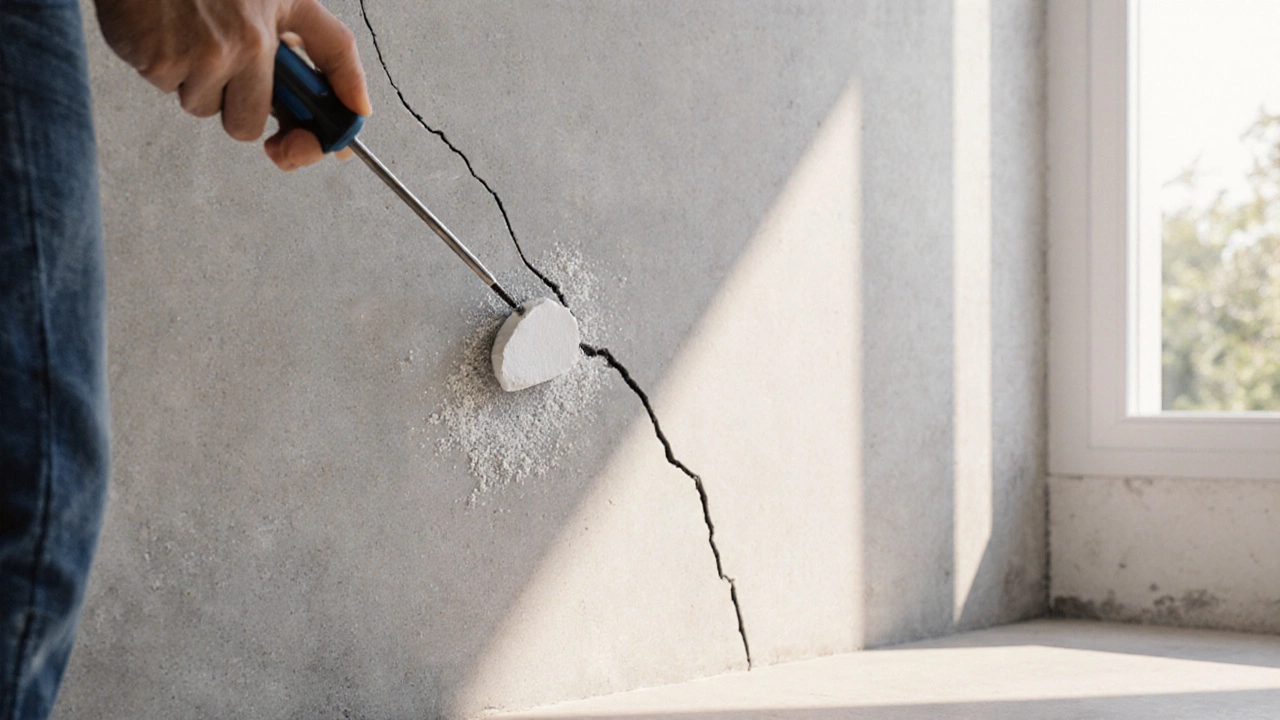Epoxy Injection: Methods, Materials & Uses
When working with epoxy injection, a liquid resin that penetrates cracks and hardens to restore structural integrity. Also known as injection epoxy, it’s a go‑to solution for fixing everything from small plaster fissures to major concrete fractures. Crack repair relies on this process to seal gaps, while foundation stabilization uses it to lock down shifting footings. The technique also involves injection grout, a specially formulated filler that carries the epoxy deep into the voids. In short, epoxy injection combines chemistry, pressure equipment, and skilled timing to turn a broken line into a solid bond.
How epoxy injection fits into building repair workflows
First, you identify the damage type. Structural cracks, settlement gaps, or even water‑leak paths each demand a specific epoxy formulation. Next, you prep the surface by cleaning debris and setting up ports – tiny entry points for the resin. Then, with a low‑pressure pump, you inject the epoxy‑mixed grout, letting it flow under pressure until it fills the entire fissure. Finally, you let it cure, usually within a few hours, and test the repair with a dye‑penetrant or load check. This sequence means epoxy injection requires precise equipment and a clear understanding of material properties. The process encompasses crack repair, yet it also requires proper sealing techniques and post‑cure evaluation to guarantee durability. When done right, the repaired element regains its original load‑bearing capacity, extending the life of the whole structure.
Why does this matter for anyone tackling a renovation or a new build? Because untreated cracks can let moisture in, accelerate corrosion of rebar, and compromise aesthetics. Using epoxy injection you get a waterproof seal that also restores strength, so you avoid costly rebuilds later. The method works in residential kitchens, commercial parking decks, historic masonry, and even underwater tunnels – wherever a crack threatens performance. Moreover, modern epoxy systems are low‑VOC, fast‑curing, and engineered for temperature swings, making them a safe choice for indoor and outdoor jobs alike. If you’re a DIY homeowner, a contractor, or a maintenance manager, understanding the link between epoxy injection, structural epoxy, and long‑term building health lets you pick the right product and avoid common pitfalls like under‑pressurizing or over‑mixing the resin. The posts below dive deeper into related topics such as foundation repair without lifting, efficient lighting choices for renovated spaces, and practical decor upgrades, giving you a rounded view of how epoxy injection fits into broader improvement projects.
Ready to see how these ideas play out in real scenarios? Below you’ll find a curated collection of articles that explore everything from precise picture‑hanging heights to comprehensive foundation fixes, all tied together by the practical mindset that makes epoxy injection a cornerstone of solid, beautiful spaces.
Inside vs Outside Foundation Crack Repair: Which Method Works Best?
Learn when to repair foundation cracks from the interior or exterior, compare methods, costs, and get a clear step‑by‑step guide for lasting results.
Continue Reading